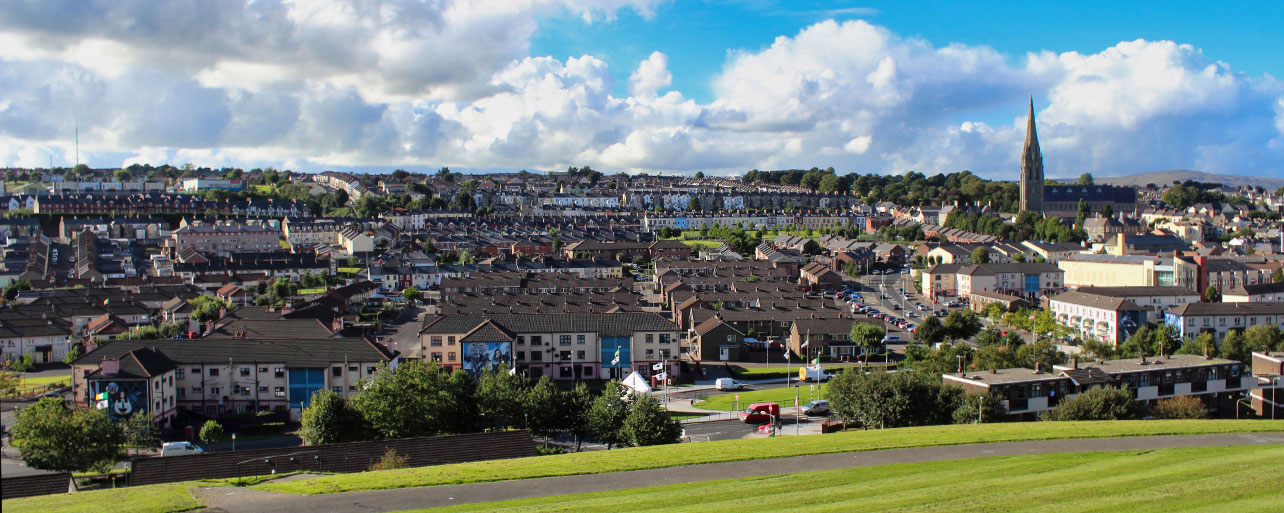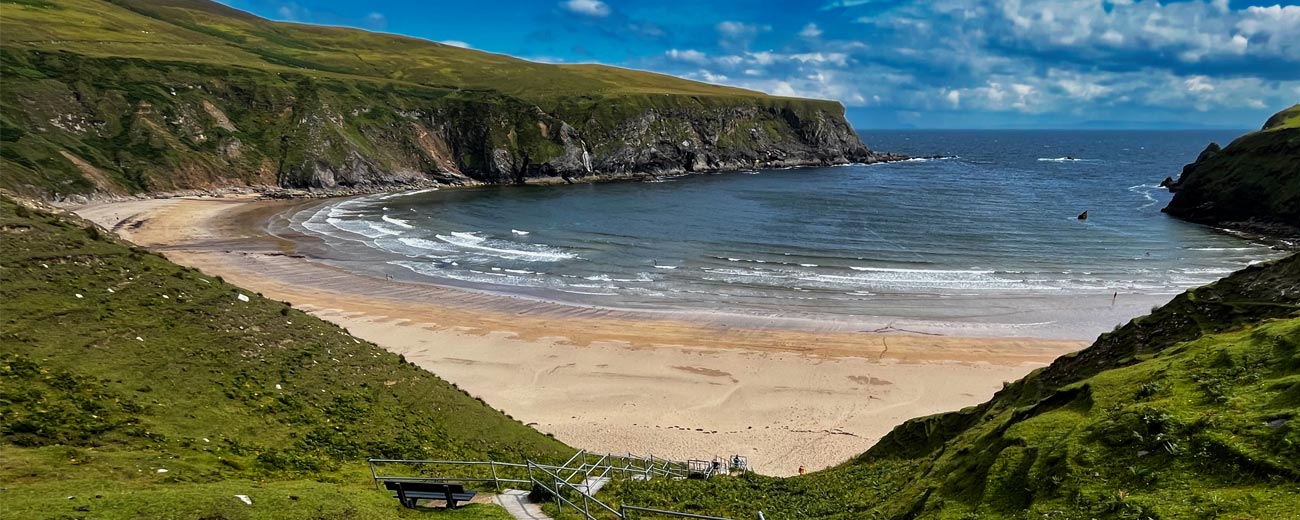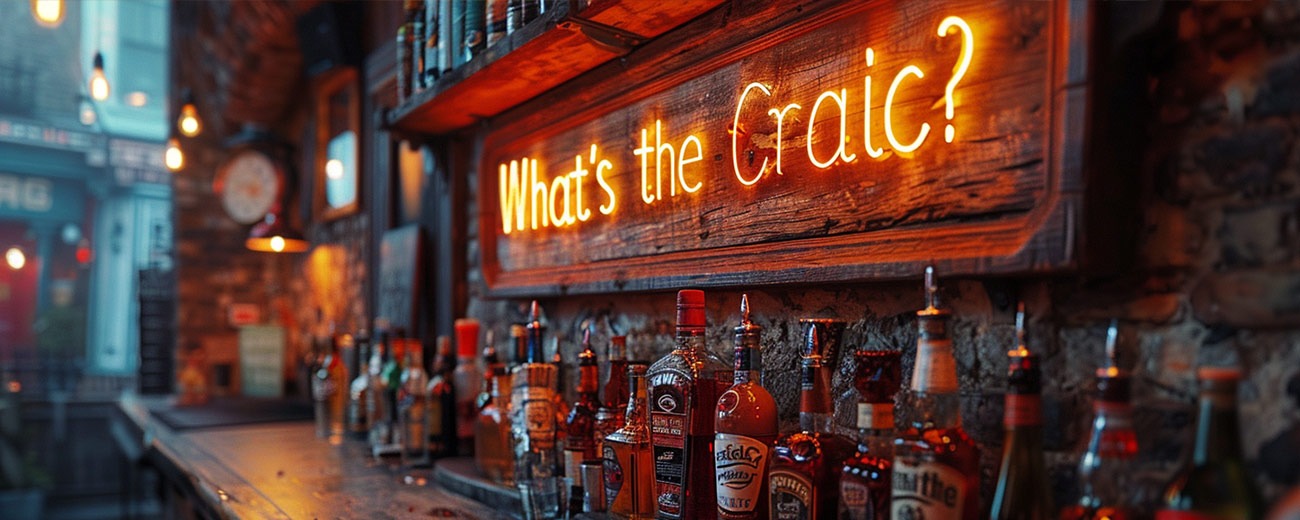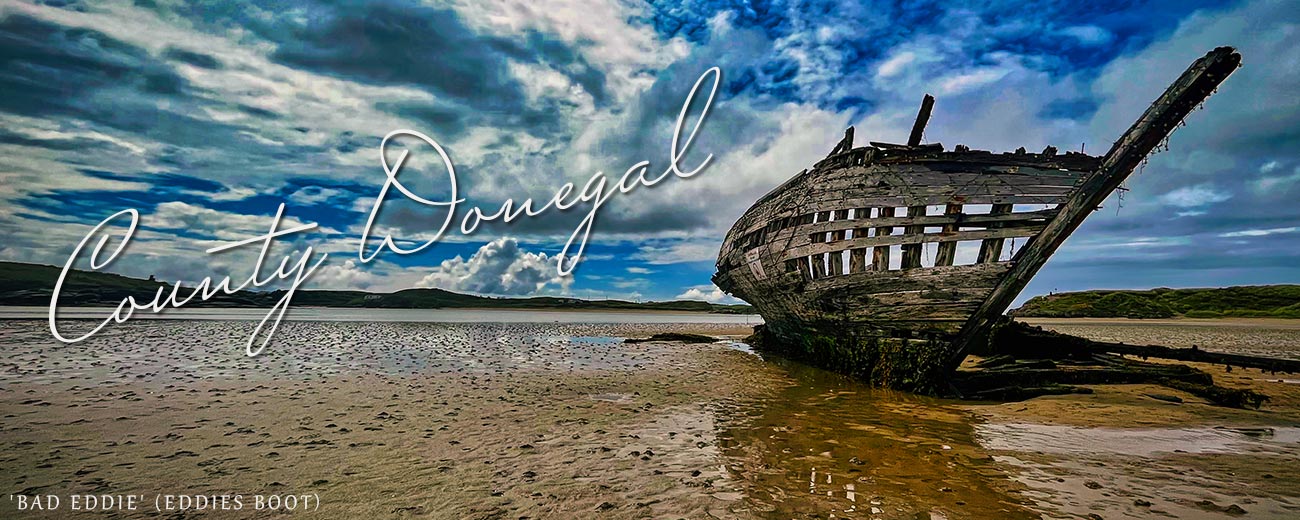
Belfast, not just any city
Belfast, the vibrant capital of Northern Ireland, with its history and culture, is a city that always deeply impresses me. Twelve years ago, when I lived in Derry for a while, I visited Belfast for the first time, and since then, I have been visiting the city again and again whenever I am traveling in Northern Ireland. Therefore, I would like to share my experiences and tips with you.
Murals in the neighborhoods of Falls Road and Shankill Road always impress me. They tell the story of the past conflicts, the history of the Northern Ireland conflict, and provide an authentic impression of life during the Troubles. The “Peace Walls”, originally erected as temporary solutions during the conflict, still serve as protective barriers between the hostile communities and help minimize violence. They have deep social impacts on daily life, the identity of the residents, and coexistence in Belfast. However, many fear that discussions about dismantling the “Peace Walls” could lead to the resurgence of old conflicts. The topic is very complex.
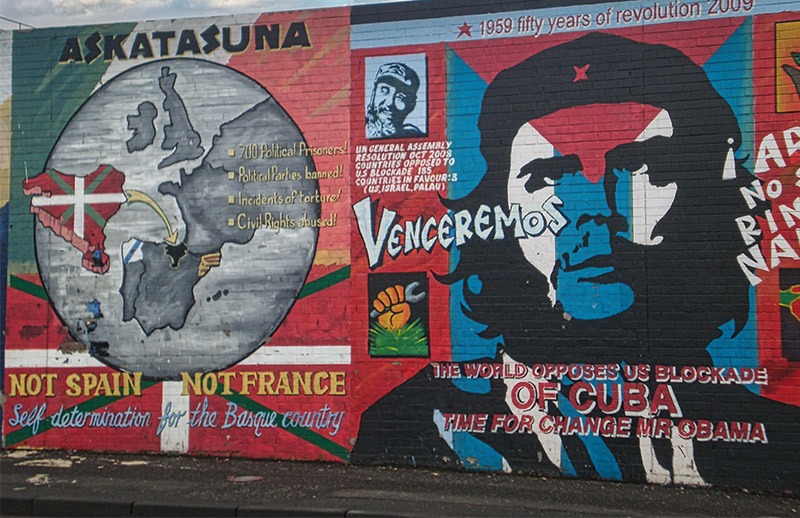
““Falls Road - Political Murals””

“Peace Walls”
E unique way to experience history up close (a little wordplay) is a “Black Taxi Tour”! These tours take you through the different neighborhoods, and you can hear many stories about that time firsthand from the taxi drivers. I can also highly recommend the political tours if you want to learn more about the “Troubles” and the history of the Northern Ireland conflict. The knowledgeable guides can tell you a lot about Belfast's political history.
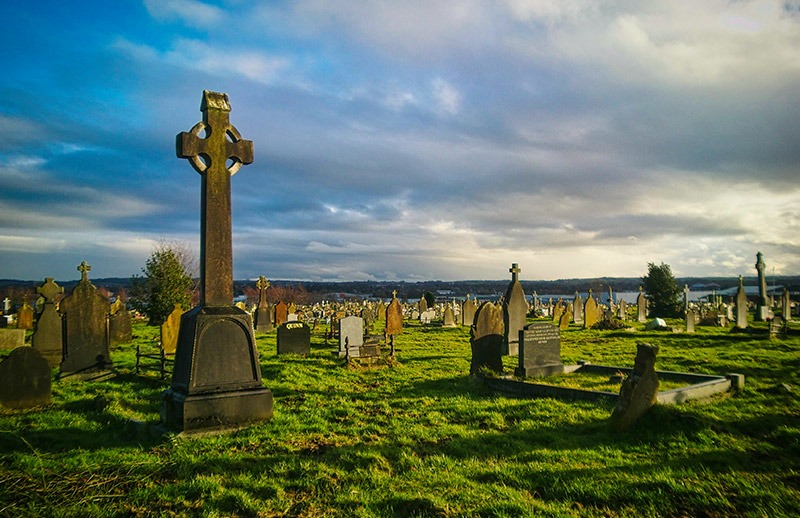
“Milltown Cemetery West-Belfast”
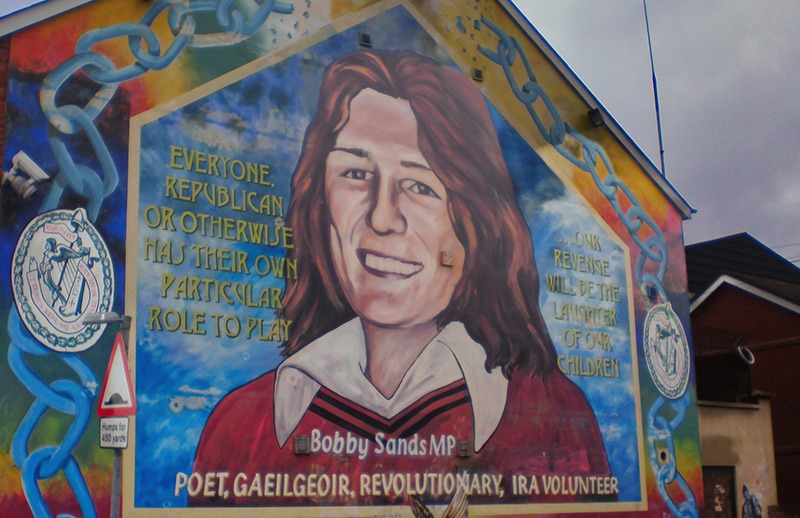
“Bobby Sands Mural”
Our revenge will be the laughter of our children.
Bobby Sands
Enother well-known landmark of the city's older history is the Titanic Belfast Museum. It is located on the site of the former shipyard Harland and Wolff, where the famous Titanic was built. The interactive exhibitions take you on a journey through the history of the Titanic, from its construction to its tragic sinking.
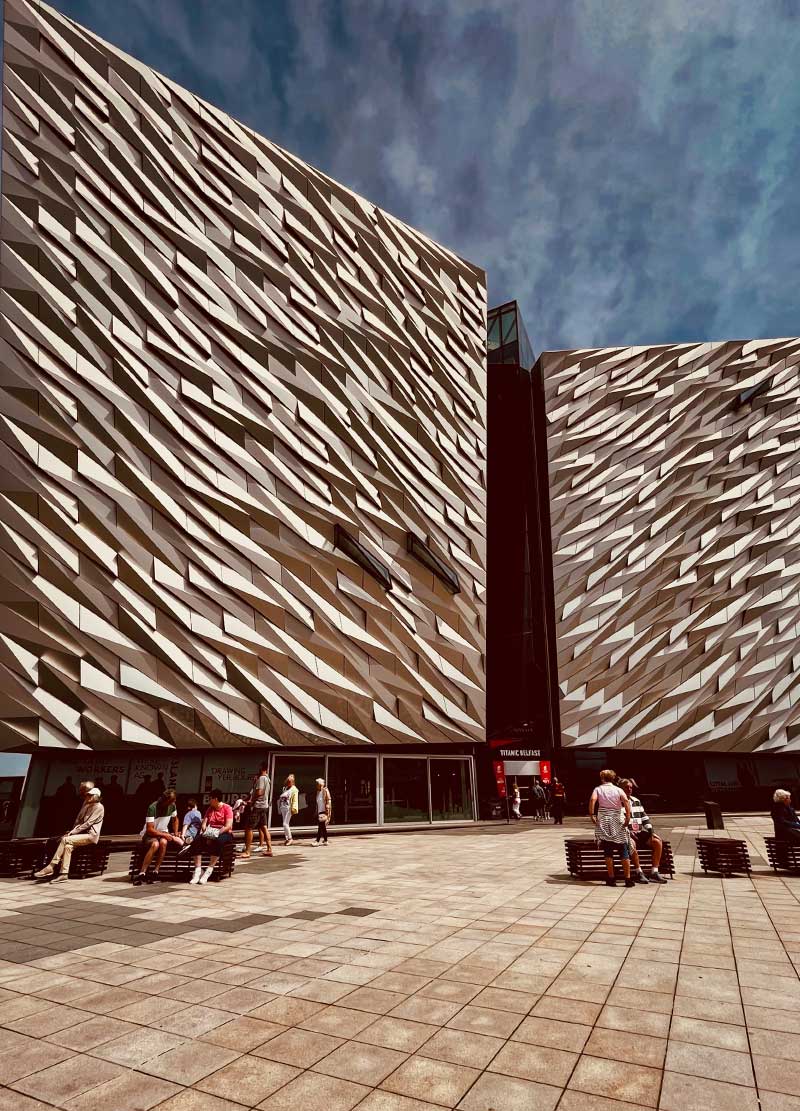
“Titanic Belfast Museum”
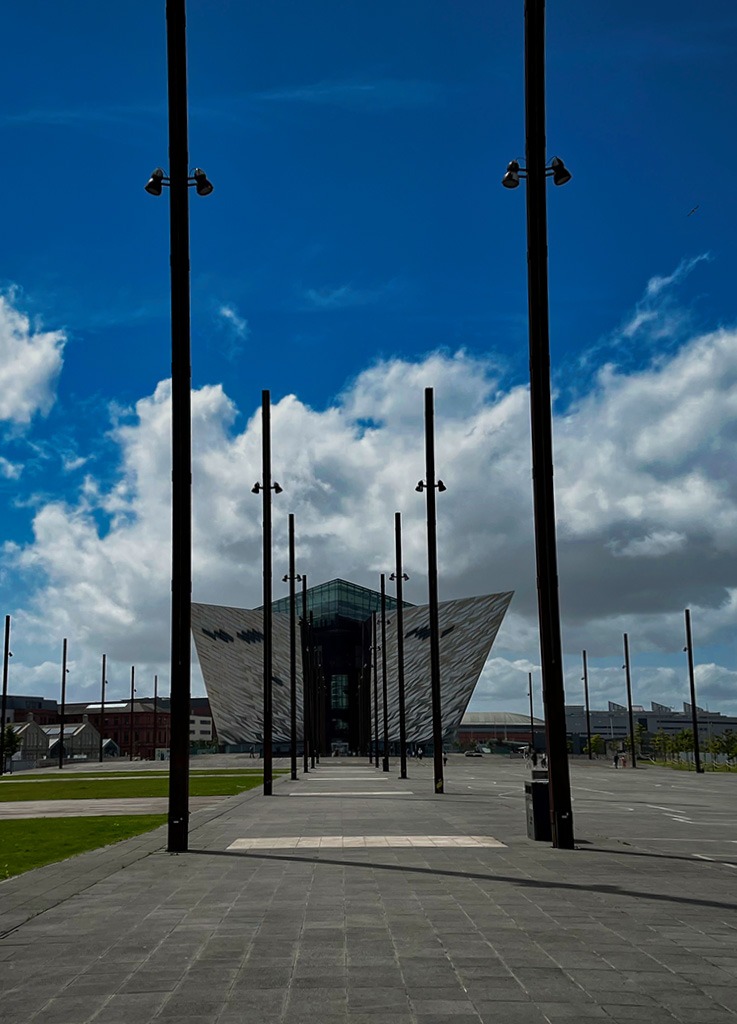
“Titanic and Olympic Slipways”
Some interesting facts about the construction of the Titanic
Here are some interesting facts about the construction of the Titanic in Belfast:
The Titanic was built between 1909 and 1912 at the Harland & Wolff shipyard in Belfast, along with her sister ship Olympic.
The construction took a total of 26 months, from the laying of the keel to the launch. The keel was laid on March 31, 1909, just 3 months after that of the Olympic.
The Titanic received the shipyard number 401. She was built on slipway No. 3 under a 69-meter-high gantry crane, which was the largest in the world at that time.
Harland & Wolff employed 14,000 workers, and at the peak of construction, even 15,000. About 3,000 of them, or 20% of the workforce, were directly involved in the construction of the Titanic.
Millions of rivets made of iron and steel were used for the hull. A typical riveting crew of 4 men could set 200 rivets per day in good weather.
During construction, there were 8 fatal accidents and 246 documented injuries among the workers.
The construction costs amounted to $7.5 million, which, adjusted for inflation, is approximately $166 million (120 million pounds) today. Interestingly, this is less than the cost of the 1997 Titanic film, which was $200 million.
On May 31, 1911, the Titanic was launched in Belfast and subsequently completed at the fitting-out quay before embarking on her fateful maiden voyage.
The Titanic Belfast Museum today commemorates the construction of the famous ship in the city. It stands at the head of the historic slipways where the Titanic was built. Outside the museum, you can walk and explore the “Titanic Slipways” and get an impression of the ship's size.

``Belfast Harbour, Titanic Museum``
In the next blog post, I will take you to the Botanic Gardens of Belfast and Cave Hill. Additionally, Belfast is an ideal starting point for excursions in the surrounding area, and there are some noteworthy markets in Belfast. And no visit to Belfast would be complete without an evening in one of the traditional pubs.
For a detailed post about Belfast, you can find it here: BELFAST FROM CONFLICT TO CULTURAL METROPOLIS






